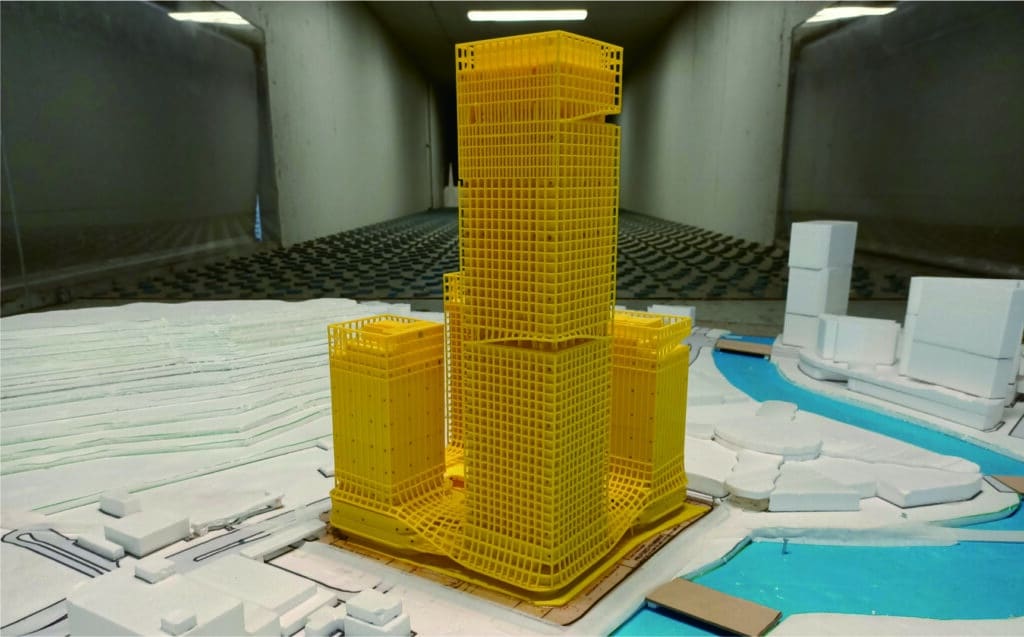Advantages of Wind Tunnel Testing on Buildings
Posted on April 8, 2022
Architects and engineers continue to push the traditional boundaries of their disciplines, and by using ultra-modern materials and state-of-the-art structural design techniques, they’re often able to create buildings and structures that are cutting edge works of art.
Key to the design of buildings and structures is the ability to have on hand accurate wind loading. However, the wind loads produced by building codes are conservative at best or can produce wind loads that depart away from reality. Most codes and standards base their predictions assuming a building with a regular rectangular form with typical height, aspect ratio, and stiffness. Many writers of codes recognise the limits of their application hence often place clauses that recommend the use of wind tunnel testing when these limits have been exceeded. For buildings that are designed to be within the limits of the code, wind tunnel testing can still be used and is being used by many project teams as a way to reduce the costs of construction due to the elimination of overdesign while ensuring that structure and cladding systems have been designed to be robust during extreme wind events over their design life.
Advantages of wind tunnel tests on building models
Wind tunnels have been used as a tool to investigate different flow phenomena which could not be predicted using empirical or computational tools. Quality Assurance manuals drafted by the American Society of Civil Engineers (ASCE) and Australasian Wind Engineering Society (AWES) specifically mention that Computational Fluid Dynamics (CFD) cannot be used for the determination of wind effects on structure and cladding as there are limitations when determining the complex gust wind speeds which is one of the primary drivers for the assessment of peak wind loads. This is also supported by Cochran and Derickson 2011. When it comes to buildings, wind tunnel testing can have the following advantages:
- Accurately simulating the near and far field wind flow structures which vastly improves the ability to assess loading on façade and structure and wind comfort/safety in critical outdoor spaces.
- Reduce construction costs by eliminating overdesign which is a common side effect of following a code-based approach rather than a performance-based design approach.
- Provide peace of mind in the case where codes may not predict the “atypical” case from a wind load perspective.
- Accuratly simulate the impacts of interferece excitation caused by the surrounding buildings.
- Can measure the contribution that aerodynamic damping has on the building response.
Wind tunnel tests consider various project-specific factors that influence the results and can be modelled in detail.
Typical factors include:
- Aerodynamic influences are associated with the shape of the building
- The wind direction in connection with regional wind climate
- Influence of neighbouring buildings and the topography of the terrain
- Interaction between building movement and wind flow
Wind tunnel testing has been proven to be the most accurate tool for simulating wind effects on and around buildings and other structures. This has been backed up by numerous benchmark studies comparing results from full scale/model scale studies. For the determination of load on structure and cladding, it remains to be the only reliable tool that can be used in the bid to ensure a robust building from a serviceability and strength design point of view.
Return to Main News Page


